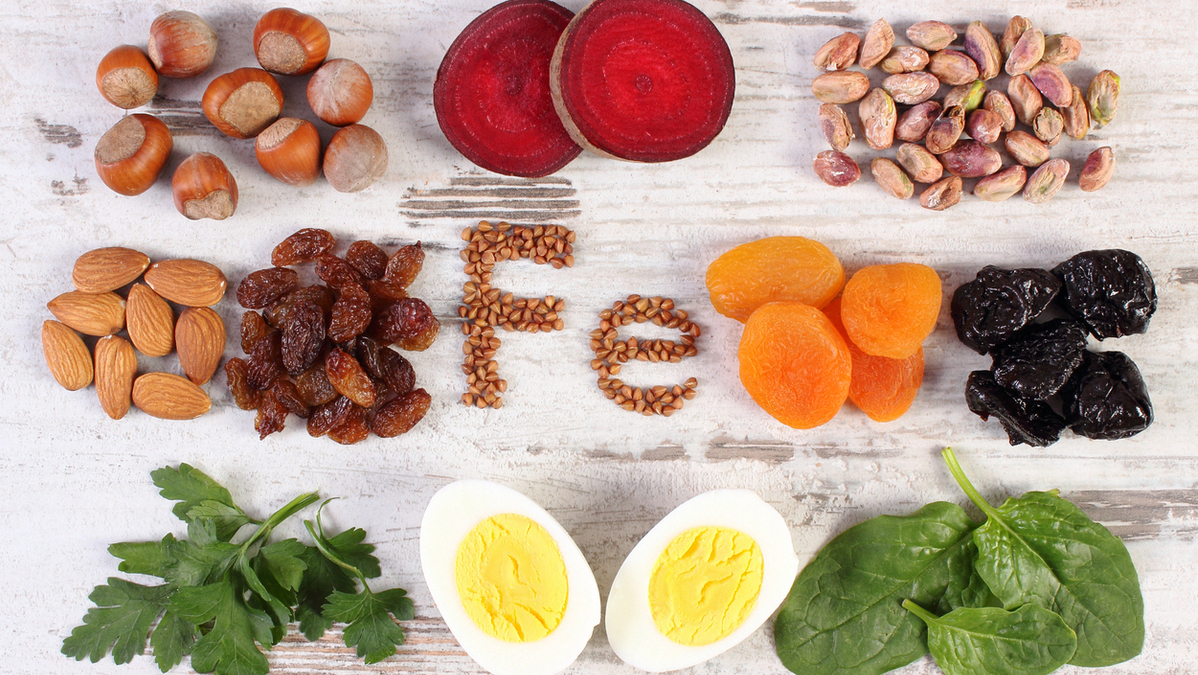Supporting Healthy Brains with Iron Rich Foods
- Written by: Lynne Lafave

Supporting healthy eating in young children can feel like a daunting task, but helping kids get the nutrients they need during the early years is critical for raising healthy kids.
One nutrient that is important during childhood is iron. Iron (Fe) is a mineral found in both plant and animal foods that is essential to growth and development. It is part of red blood cells (hemoglobin) that deliver oxygen to our body’s cells. More importantly, iron is a key nutrient that supports healthy brain development.1
What Happens if Children Don’t Get Enough?
Iron deficiency can affect growth and may lead to learning and behavioral problems. When children do not get enough iron in their diet (iron deficiency), their bodies make less hemoglobin and fewer red blood cells because of this missing iron (iron deficiency anemia).2 This means tissues and organs will not receive all the oxygen that they need.
Canadian researchers have found that a child's iron levels are directly connected to mental processes involved in learning, critical thinking, and reasoning (cognitive function). Children with adequate iron levels were found to have better cognitive function compared to children with deficient iron levels.3
Is this a Concern in Canada?
It is estimated that in developed countries, like Canada, about 1 in 6 children have an iron deficiency.4 This risk gets higher for children from food insecure families and “picky eaters”. 5,6 Iron deficiency typically occurs in early childhood, which is a sensitive period for neurodevelopment. Considering the current research indicating that iron deficiency is present in Canada, it is important to consider ways to support children in eating good sources of iron every day.
How Can We Support Preschoolers Getting Enough Iron?
Many protein foods contain iron. Three-year-olds need about 7 mg per day from food sources and this increases to 10 mg for children 4-5 years old.7 Boost a child’s intake by including iron-rich plant-based protein foods like lentils, beans, and tofu or iron-rich animal-based protein foods like lean meats, chicken, and fish at each meal/snack opportunity.
Plant-based proteins like lentils, beans, or peas are often less expensive than animal-based proteins. Choosing to include these foods can provide iron as well as protein, fibre, and other vitamins and minerals while saving money.
PRO TIP: Adding a vitamin C rich food to this meal/snack will help your child’s body absorb more of the iron from the food. Some vitamin C rich foods include bell peppers, broccoli, cauliflower, strawberries, and oranges.
Food Pairing Recipes for Child Care - high in iron & vitamin C
Check out our Healthy Eating Resource page for great links to our partner sites that support healthy eating ideas for young children. Here are a few recipes to get you started.
- Vegetable Chili (iron from beans, vitamin C from tomatoes)
- Hummus dip and bell peppers (iron from chickpeas, vitamin C from bell peppers)
- Sweet Potato Black Bean Stew (iron from beans, vitamin C from sweet potatoes)
- Green Smoothie (iron from spinach, vitamin C from fruit)
- Breakfast Burritos (iron in eggs, vitamin C from tomatoes)
More Resources for Boosting Iron
- Review Alberta Health Services resource “Boost nutrition with iron at every meal!”.
- Sharing this resource in your centre’s newsletter to get families on board.
References
-
Baker RD, Greer FR, and the Committee on Nutrition, American Academy of Pediatrics. Clinical report – diagnosis and prevention of iron deficiency and iron-deficiency anemia in infants and young children (0 – 3 years of age). Pediatrics. 2010;126:1040-50.
-
Georgieff, M. K. (2017). Iron assessment to protect the developing brain. The American journal of clinical nutrition, 106(suppl_6), 1588S-1593S.
-
Parkin, P. C., Koroshegyi, C., Mamak, E., Borkhoff, C. M., Birken, C. S., Maguire, J. L., ... & Mason, D. (2020). Association between serum ferritin and cognitive function in early childhood. The Journal of Pediatrics, 217, 189-191.
-
Gupta PM, Hamner HC, Suchdev PS, et al. Iron status of toddlers, nonpregnant females, and pregnant females in the United States. Am J Clin Nutr 2017; 106(Suppl 6):1640S-6S.
-
Taylor, C. M., Northstone, K., Wernimont, S. M., & Emmett, P. M. (2016). Macro-and micronutrient intakes in picky eaters: a cause for concern?. The American journal of clinical nutrition, 104(6), 1647-1656.
-
Carsley S, Borkhoff CM, Maguire JL, et al.; TARGet Kids! Collaboration. Cohort profile: The Applied Research Group for Kids (TARGet Kids!). Int J Epidemiol 2015;44:776-88. 4. 4.
-
Institute of Medicine (IOM). Dietary reference intakes: the essential guide to nutrient requirements. Washington, DC: The National Academies Press; 2006. p. 6, 8.